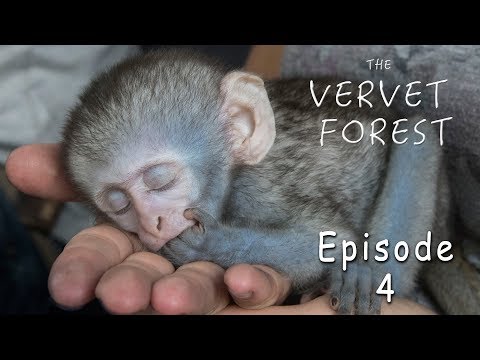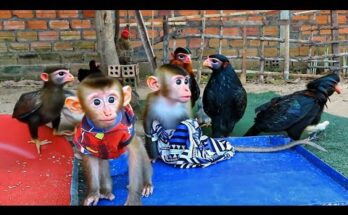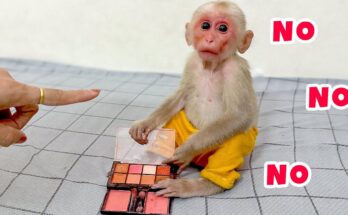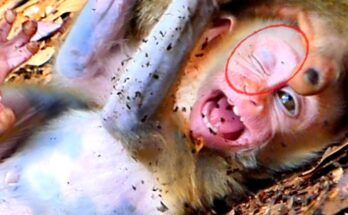
Most of these babies, like little Kibo, Mila, and Zazu, arrived at the sanctuary under heartbreaking circumstances — victims of poaching, habitat destruction, or illegal pet trade. When they first came in, they were frightened, confused, and entirely dependent on their human caregivers for survival. Feeding had always involved bottles and hand-feeding, with volunteers mimicking the touch and comfort of a mother.
But as the babies grow stronger, it’s time for the next phase: learning how to feed themselves — safely, properly, and together.
The introduction to the feeding cage begins slowly. Caregivers first bring the baby monkeys near the structure during playtime, placing enticing pieces of ripe bananas, apples, and leafy greens just inside the entrance. The boldest babies usually approach first, sniffing cautiously, then darting in to grab a snack before running back out.
Others are more hesitant, clinging to one another or hanging back in the trees. But curiosity is a powerful teacher. Within a few days, more babies begin to venture inside — not just for the food, but to copy what they’ve seen their peers do. Social learning is one of the strongest traits in monkeys. What one learns, others soon follow.
The feeding cage also teaches more than just how to eat. It helps the young monkeys develop patience, cooperation, and even a sense of hierarchy. They learn when to wait their turn, how to share space, and how to communicate with subtle grunts and gestures.
For the caregivers, the cage also becomes a valuable tool for managing health. By encouraging the monkeys to enter calmly and voluntarily, the team can monitor their eating habits, administer vitamins, and even conduct gentle health checks without stress or force.
There are always humorous moments. Some of the babies figure out how to sneak extra food, hiding pieces under their arms or making a second trip when no one is looking. One clever youngster, Tula, even learned how to open the outer door herself — much to the surprise (and amusement) of the sanctuary team.
With every day that passes, the babies become more confident, more curious, and more capable. What began as a cage becomes a symbol of growth and preparation for the world beyond.
Soon, these little ones will graduate to bigger enclosures and eventually, if they’re strong and socially ready, they’ll be introduced into large troops with the hope of one day being released into the wild.
But for now, learning to step into the feeding cage is their first small step on a long road to freedom.


